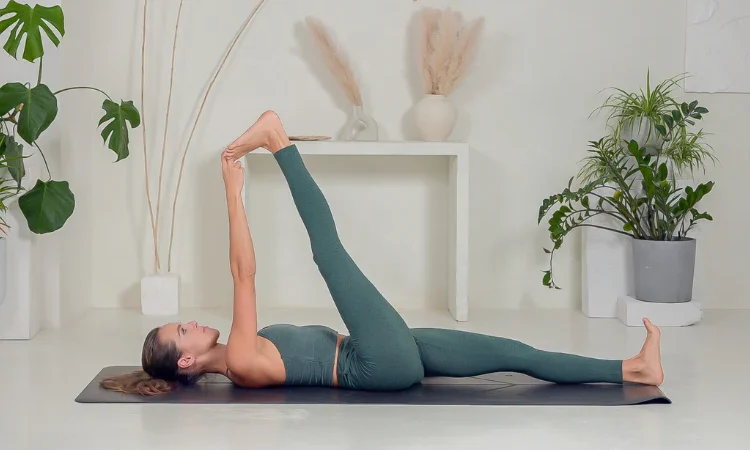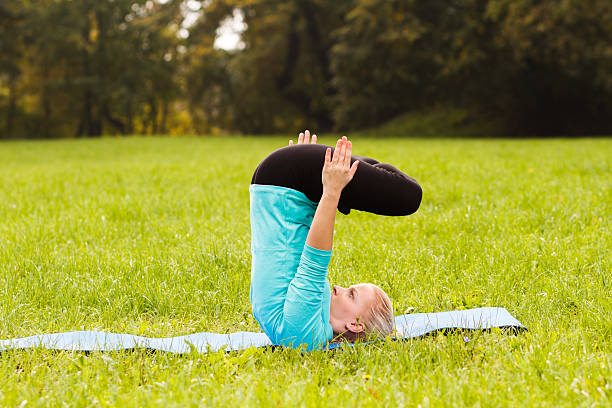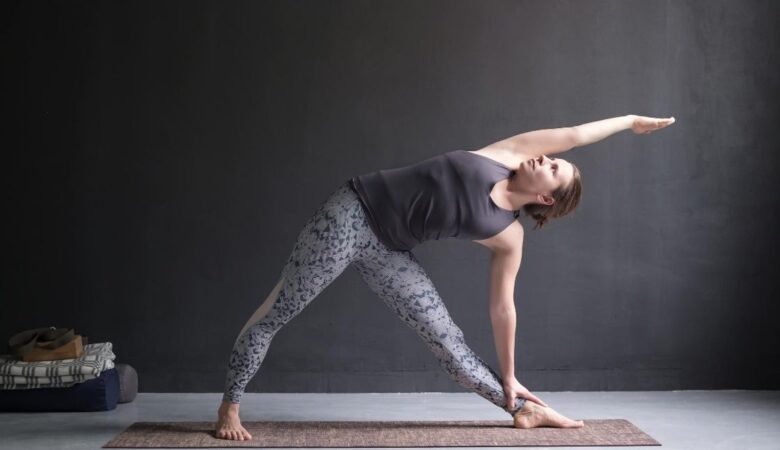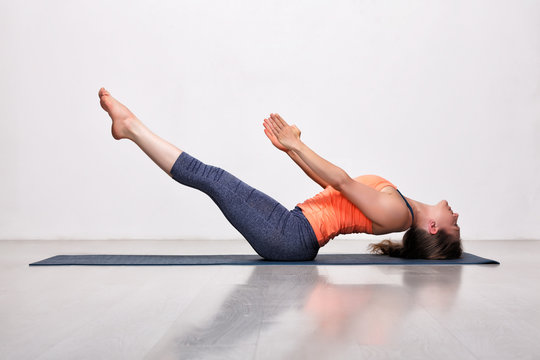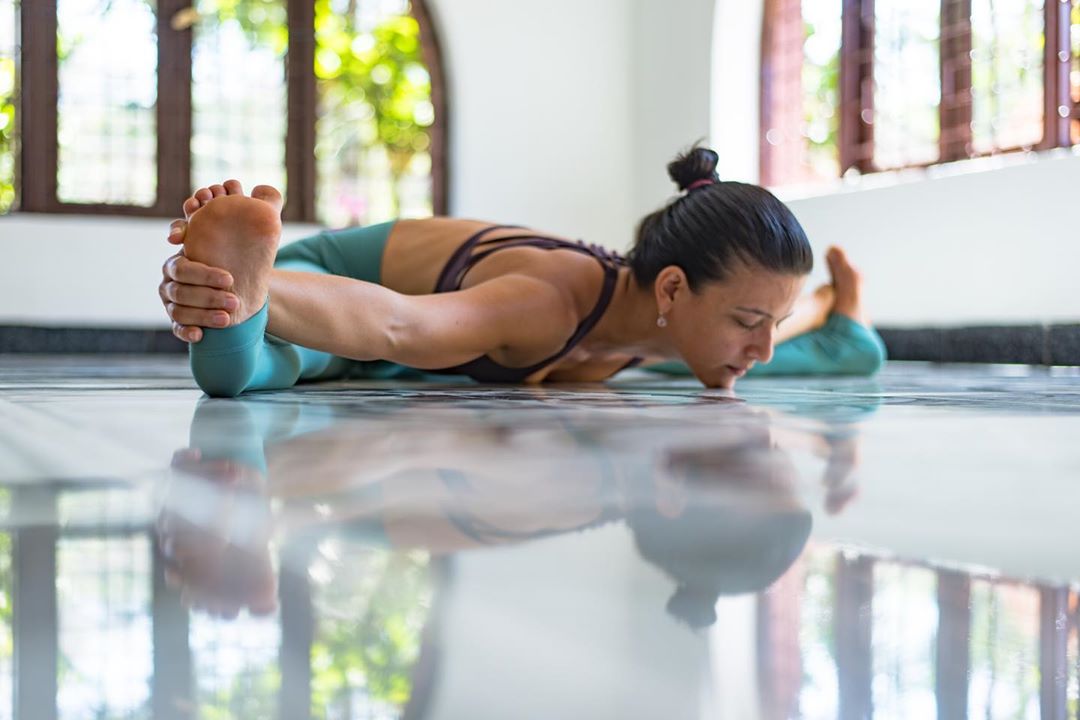
Sanskrit Name: Upavistha Konasana (उपविष्ठ कोणासन)
English Name: Wide-Angle Seated Forward Bend
Type of Yoga: Hatha Yoga
Level of Yoga: Advanced / Intermediate
Duration: As per your capability or 30 to 60 seconds
Target Area: Legs
Strengthens: The Vertebral Columns
Upavistha Konasana (Wide-Angle Seated Forward Bend) is extremely beneficial for the upper part of your leg. This strengthens the muscles of the thighs and strengthens it as well as increases the flexibility. With the regular practice of Upavistha Konasana (Wide-Angle Seated Forward Bend), fat starts to decrease from thighs and hips.

Table of Contents
What Does It Mean By Upavistha Konasana?
Upavistha Konasana is composed of three Sanskrit language words.
Where the first word is “Upavistha (उपविष्ठ)”, which means “Sitting or Seated”
The second word is “Kona (कोण)”, which means “Angled”
And the third word is “Asana (आसन)”, which means “Yoga Pose”
This posture gives good stamina to the body. It is one of the best seats in the sitting Asanas. The practice of this asana prepares the person physically and mentally for those currencies, whose practice is done by sitting.
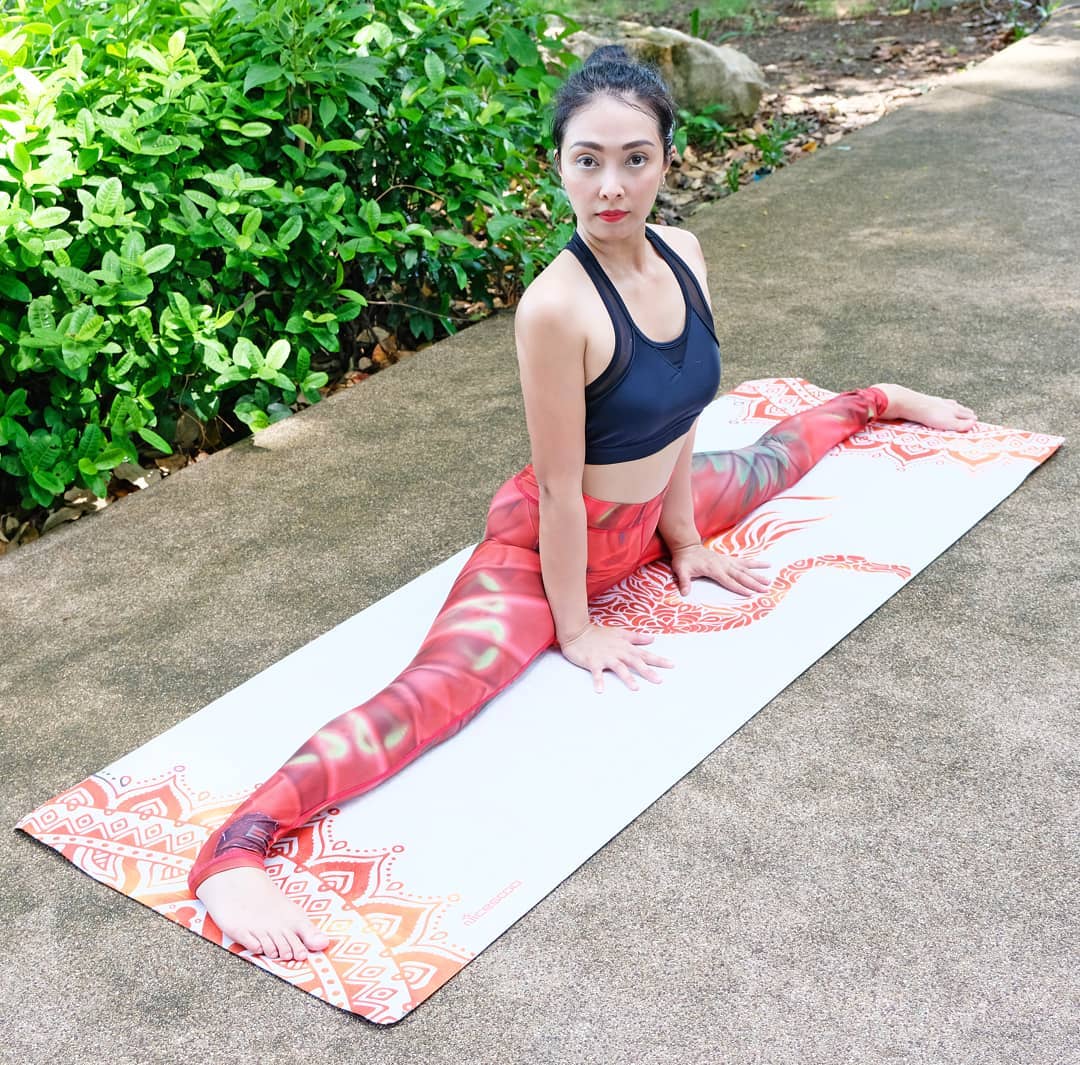
Preparatory Poses of Upavistha Konasana:
- Dandasana (दंडासन) or Staff Pose
- Baddha Konasana (बद्ध कोणासन) Or Bound Angle Pose Or Butterfly Pose
- Prasarita Padottanasana (प्रसारिता पादोत्तनासन) Or Wide-Legged Forward Bend
- Paschimottanasana (पश्चिमोत्तानासन) Or Seated Forward Bend, Intense Dorsal Stretch
- Supta Padangusthasana (सुप्त पादंगुष्ठासन) Or Reclining Hand-To-Big-Toe Pose
- Supta Baddha Konasana (सुप्त बुद्ध कोणासन) Or Reclining Bound Angle Pose
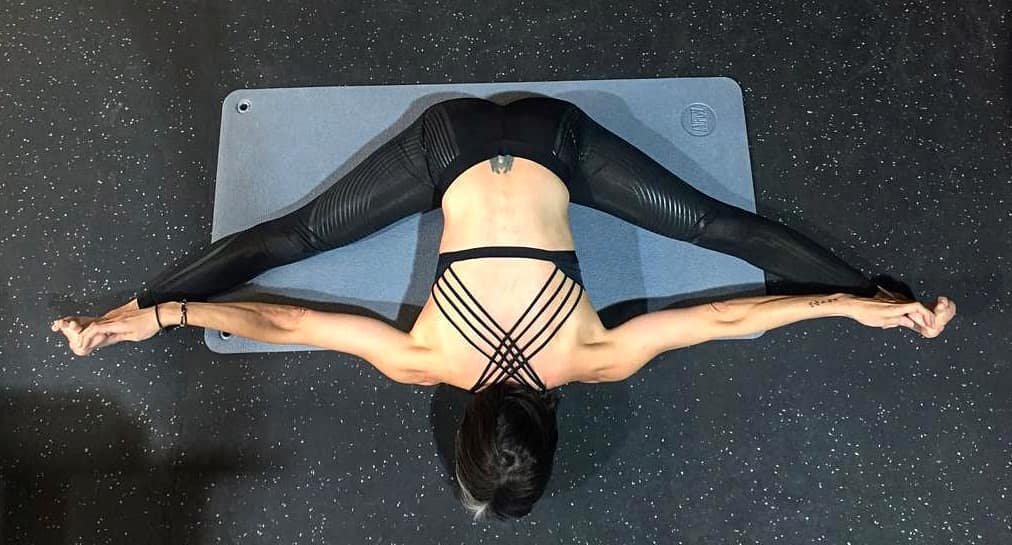
Method of doing Upavistha Konasana:
- Practice the asana in a quiet place.
- At first stand in Dandasana or Staff Pose.
- Straighten the spinal cord Spread legs parallel to the shoulders, making them an angle of 90° with your pelvis.
- In this condition, your pelvis should feel comfortable.
- Leave both hands behind the hips on the ground.
- With a long breath, let the waist forward and circulate the edges of the shoulders.
- Staying in this state for some time, slowly move the hands forward and hold both big toe or soles with your hands.
- When catching soles, only to hold the middle part of the soles.
- On the contrary, if you catch the upper part of the leg or the thumb, then there may be a difficulty while bending forward.
- Exhalation, give head to the spinal cord.
- Go ahead and hang chin on the floor.
- Keep breathing normally.
- Stay in the asana for at least 30 to 60 seconds.
- Repeat this posture 3 to 4 times.
NOTE:
While practicing this asana you can focus your attention on the nose, between the embryos or on the movement of the breath
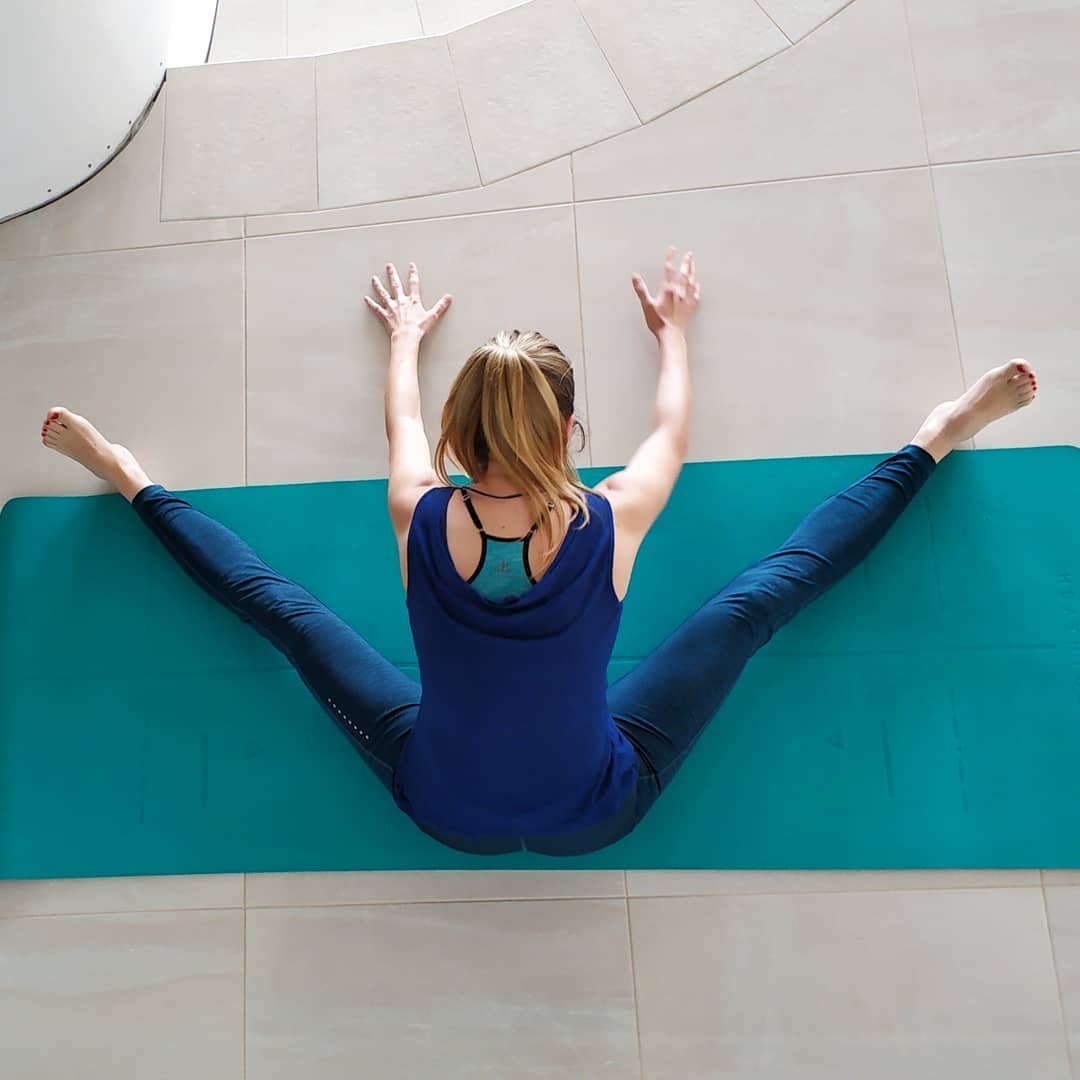
Beginner’s Tips:
It can be a very challenging posture for beginners who want to practice it for the first time. So, if you feel tired while bending, then the feet can bend your feet slightly toward your knees to avoid it.
Use a lower pillow or blanket to keep the pelvis stable and smooth
Follow-Up Poses Of Upavistha Konasana:
- Bakasana (बकासन) or Crow/Crane Pose
- Gomukhasana (गोमुखासन) or Cow Face Pose
- Malasana (मलासन) or Garland Pose
- Padmasana (पद्मासन) or Lotus Pose
- Siddhasana (सिद्धासन) or Accomplished Pose
- Sukhasana (सुखासन) or Easy Pose
- Baddha Konasana (बद्ध कोणासन) Or Bound Angle Pose Or Butterfly Pose
- Supta Padangusthasana (सुप्त पादंगुष्ठासन) Or Reclining Hand-To-Big-Toe Pose
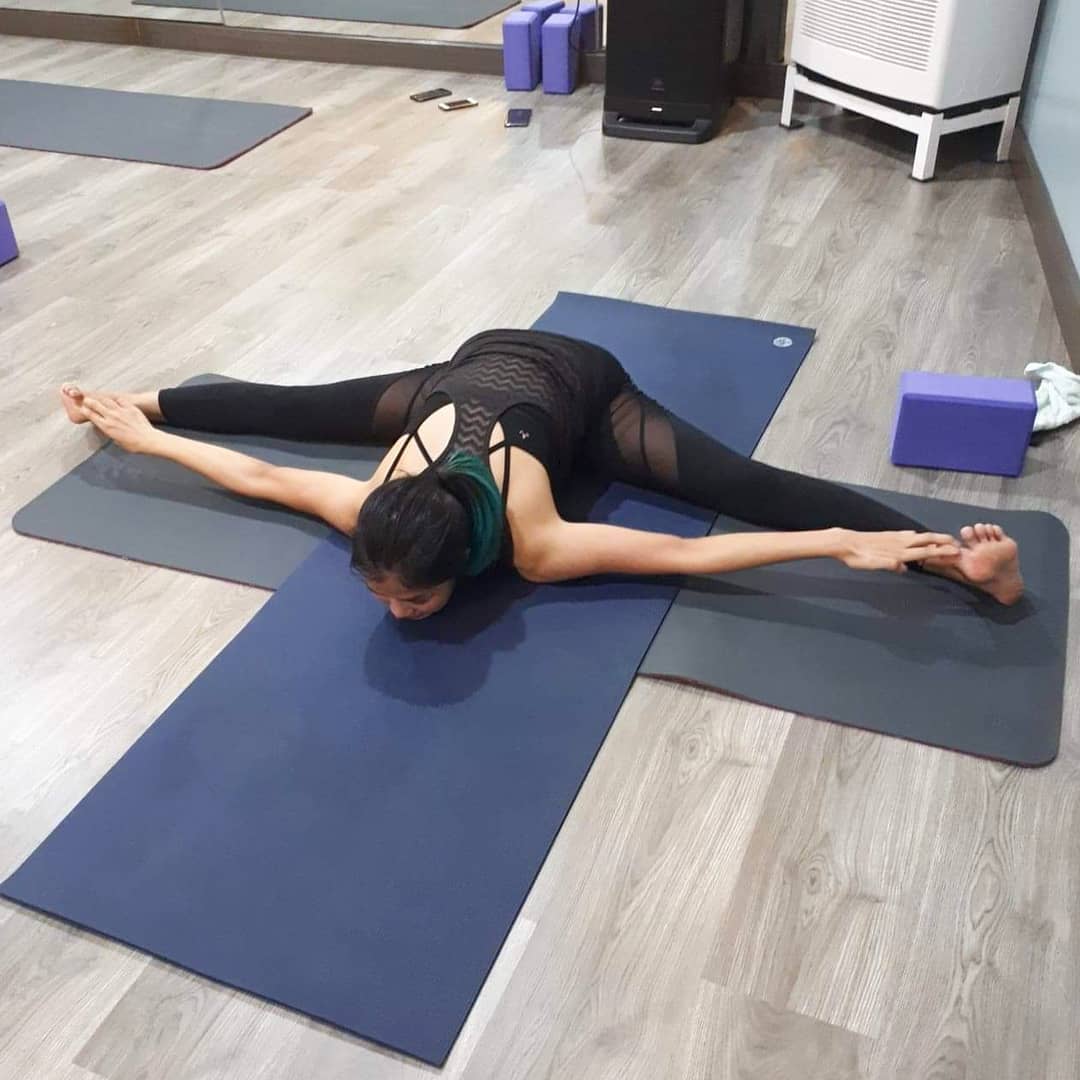
Precautions for Upavistha Konasana:
If you are suffering from the problem of groin or rhinoceros, then you will not be able to practice this asana
This posture is not for pregnant women
If you have pain in the lower part of your back, you sit on a blanket or a block while doing this posture
Yoga is considered suitable for body and soul in the morning, so try to practice this asana in the morning
Your abdomen must be empty before practicing this asana
NOTE:
For some reason, if you can’t practice yoga in the morning, then you can practice it even in the evening. Just remember to keep a gap between your exercise and food at least 5 hours.
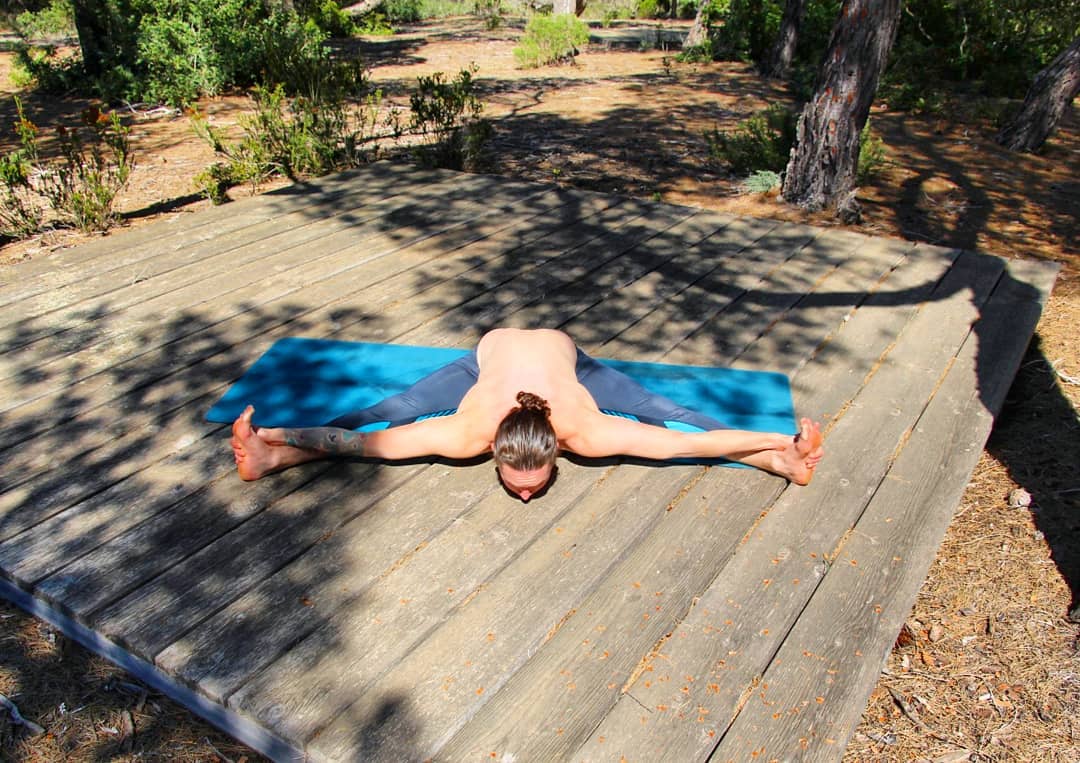
Benefits of Upavistha Konasana:
- Regular practice of this posture gives a great pull to the lower parts of the waist and thus strengthens it
- It strengthens your legs, shoulders muscles, elbows
- Its practice enhances appetite by igniting gastric
- Massaging the abdominal organs strengthens digestibility
- By removing unnecessary fat, it is helpful to lose weight
- Keep the chest wide and keep the lungs healthy
- Makes the waist flexible and attractive
- Strengthens the spinal cord and helps to keep the pain away
- Controls hormones and increases masculinity
- With regular exercise, the mind remains calm
- It keeps the kidney clean and healthy
- Its practice raises endurance, patience, courage, compassion in the seeker
FAQ:
Q. What is Upavistha Konasana?
A. Upavistha Konasana is a seated yoga pose where the legs are stretched wide apart while folding forward from the hips. It enhances flexibility in the hamstrings, inner thighs, and lower back, and is often used in both restorative and active yoga practices.
Q. What are the main benefits of Upavistha Konasana?
A.
- Improves hip and hamstring flexibility
- Stimulates abdominal organs and aids digestion
- Calms the nervous system and relieves mild anxiety
- Enhances circulation in the pelvic region
- Prepares the body for deeper seated forward bends and meditative poses
Q. How do I correctly perform Upavistha Konasana?
A.
- Sit on the floor with your legs extended wide apart.
- Keep the spine tall and toes pointing upward.
- Inhale, lengthen the spine; exhale and begin to hinge forward from the hips.
- Place hands on the floor or hold big toes with fingers.
- Maintain the position for 30 seconds to 1 minute, breathing deeply.
Q. What props can I use if I’m a beginner?
A.
- Blanket under hips to elevate and tilt the pelvis forward
- Bolster or block under the chest for support in the forward bend
- Strap around feet if reaching the toes isn’t possible
Props help maintain correct alignment and prevent injury.
Q. What should I avoid while doing this pose?
A.
- Avoid rounding the spine excessively
- Don’t force the legs wider than comfortable
- Avoid bouncing or jerky movements
- If you have lower back injuries, consult a teacher before attempting
Q. Can this pose help with menstrual discomfort?
A. Yes. When done gently or supported with props, Upavistha Konasana can help ease menstrual cramps by improving pelvic blood flow and reducing tension in the lower abdomen and hips.
Q. Is this pose suitable during pregnancy?
A. It may be safe in early pregnancy with props and modifications. Always practice under the guidance of a certified prenatal yoga instructor and avoid deep forward folding as the belly grows.
Q. Can I do Upavistha Konasana if I have tight hamstrings?
A. Absolutely. Use props to modify:
- Sit on a folded blanket
- Keep a gentle bend in the knees
- Don’t go too deep into the forward bend—prioritize spine length and hip hinge
Q. How long should I hold this pose?
A. Beginners can start with 30 seconds and gradually increase to 1–3 minutes. In restorative sessions, it may be held longer with full support using bolsters or blankets.
Q. What poses can I do before and after Upavistha Konasana?
A. Before:
- Baddha Konasana (Bound Angle Pose)
- Supta Padangusthasana (Reclined Hand-to-Big-Toe Pose)
- Janu Sirsasana (Head-to-Knee Pose)
After:
- Paschimottanasana (Seated Forward Bend)
- Supine Twist
- Shavasana (Corpse Pose)

